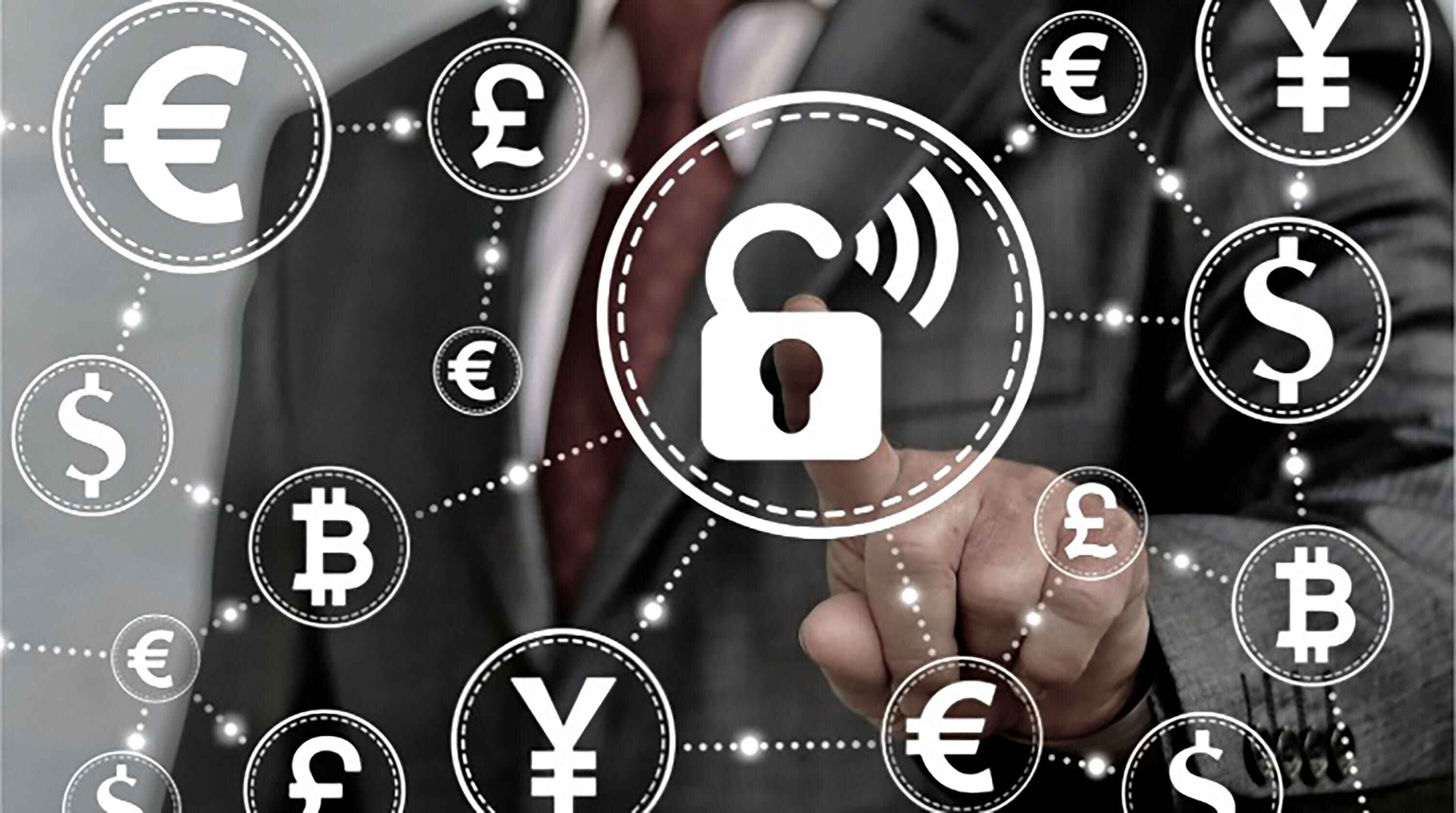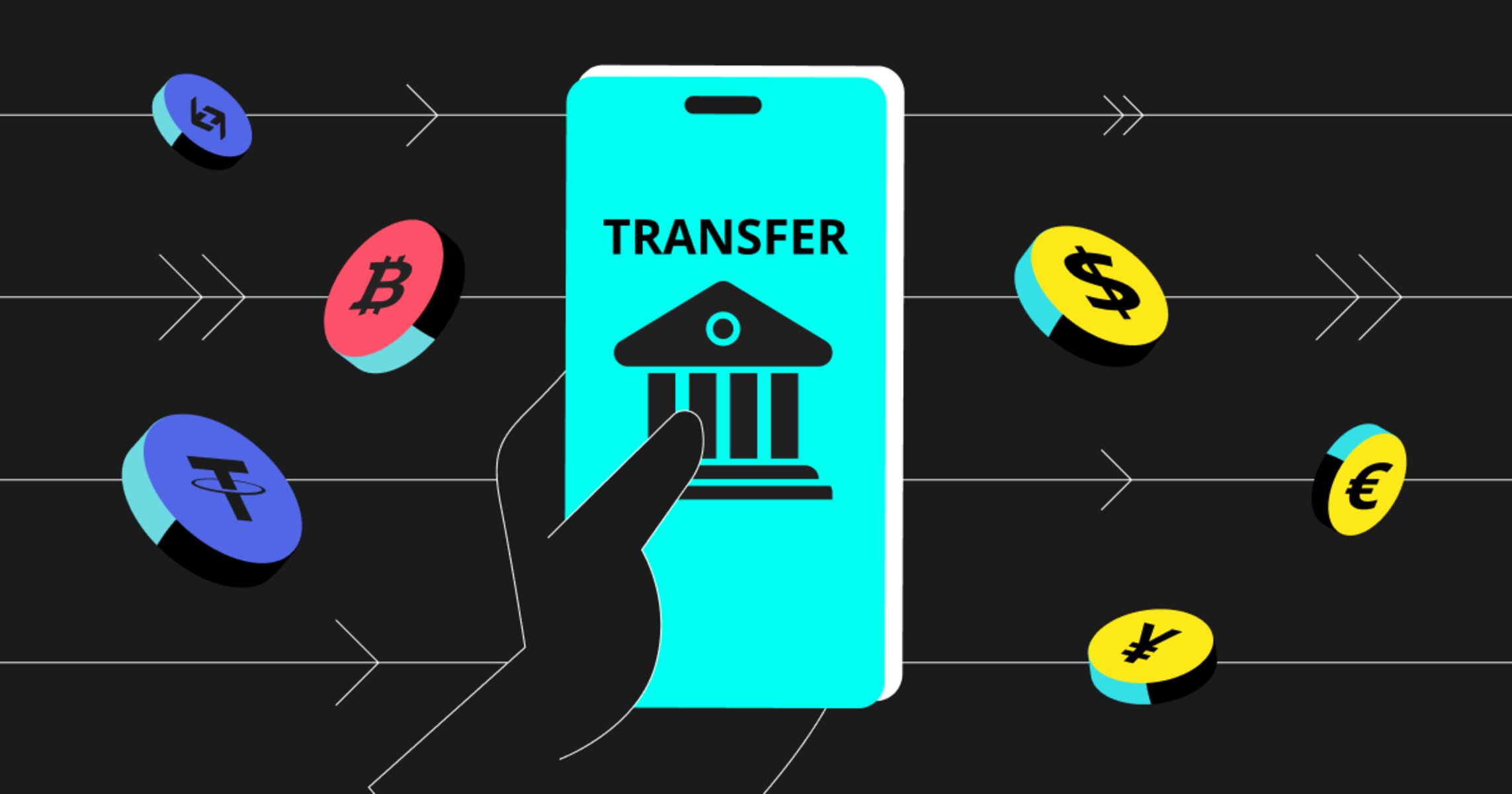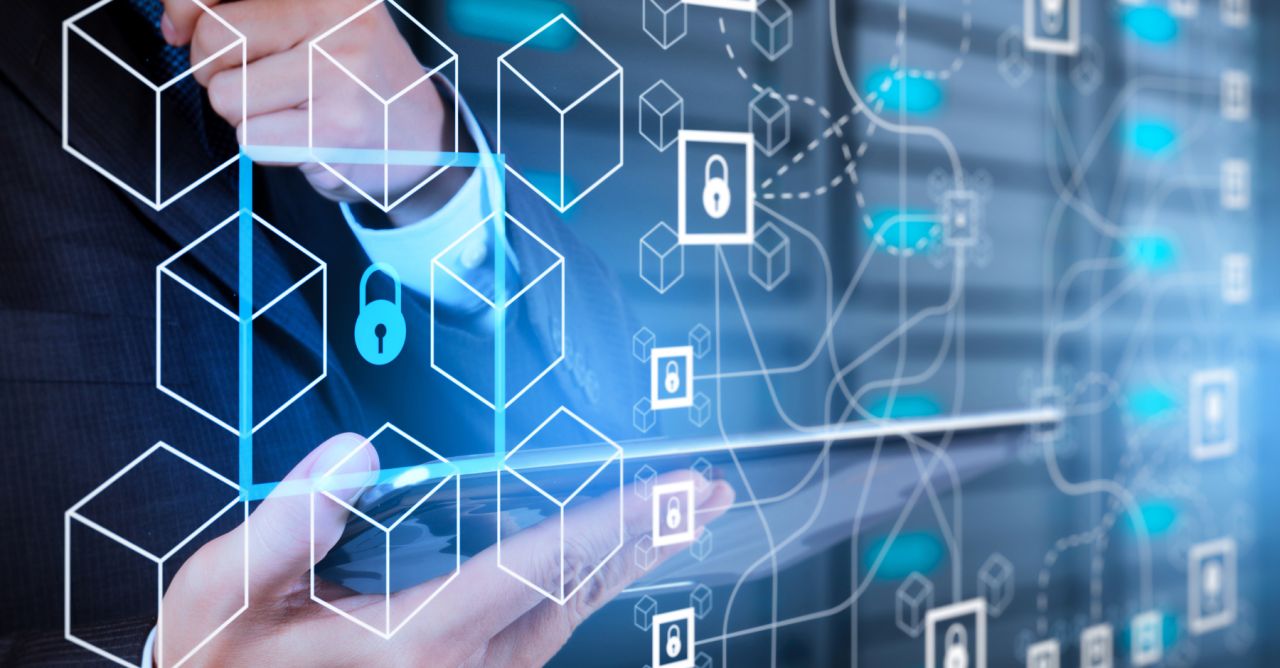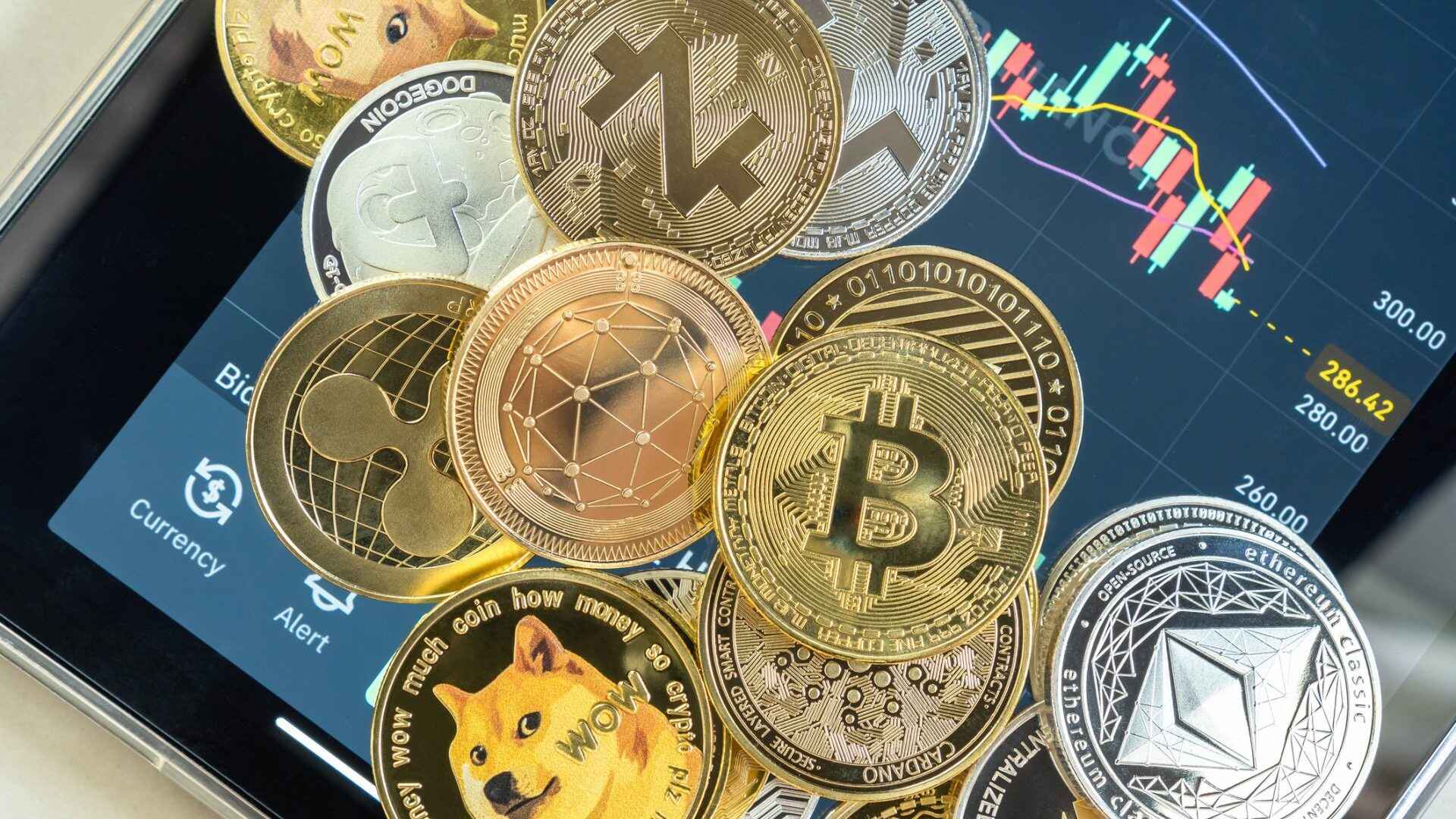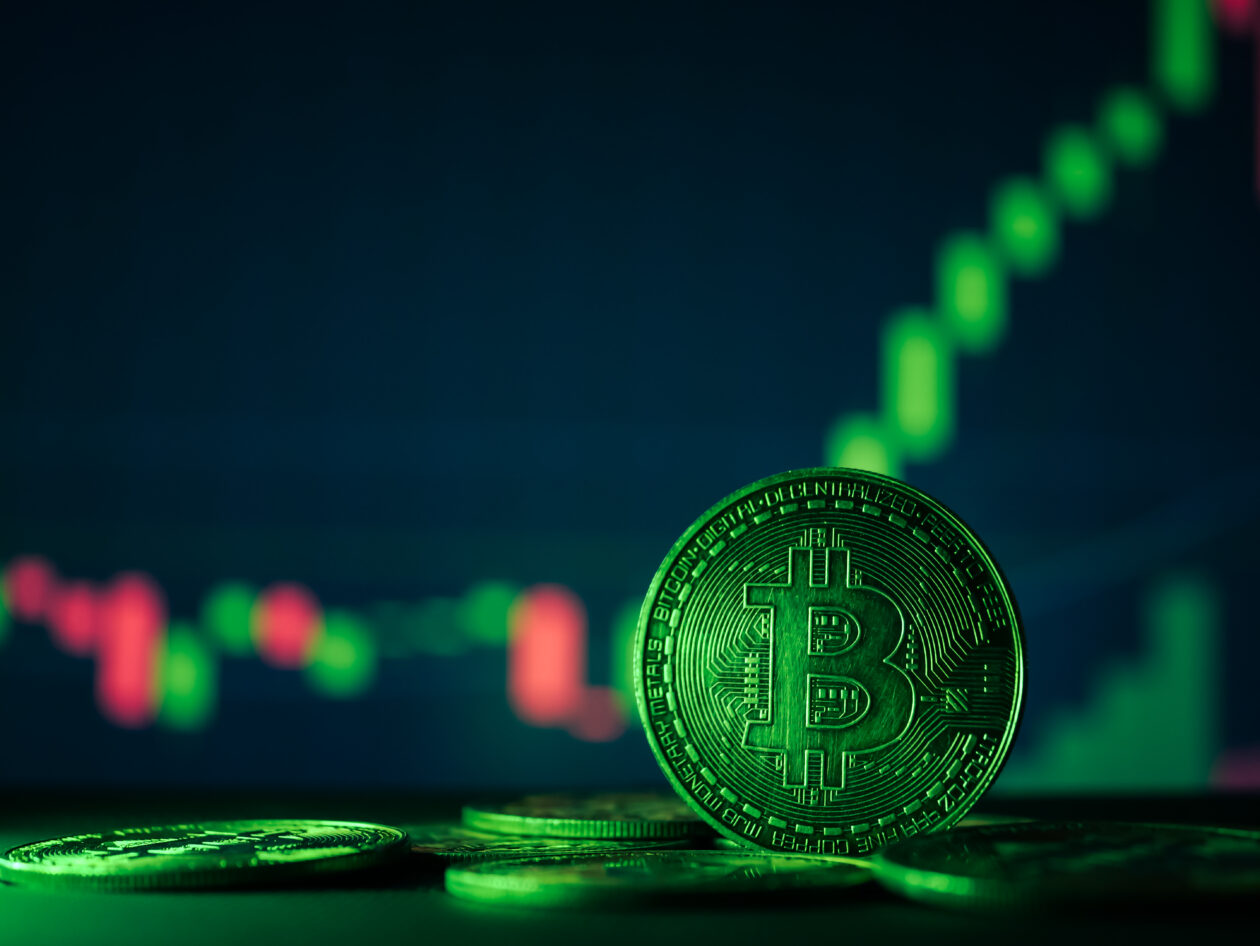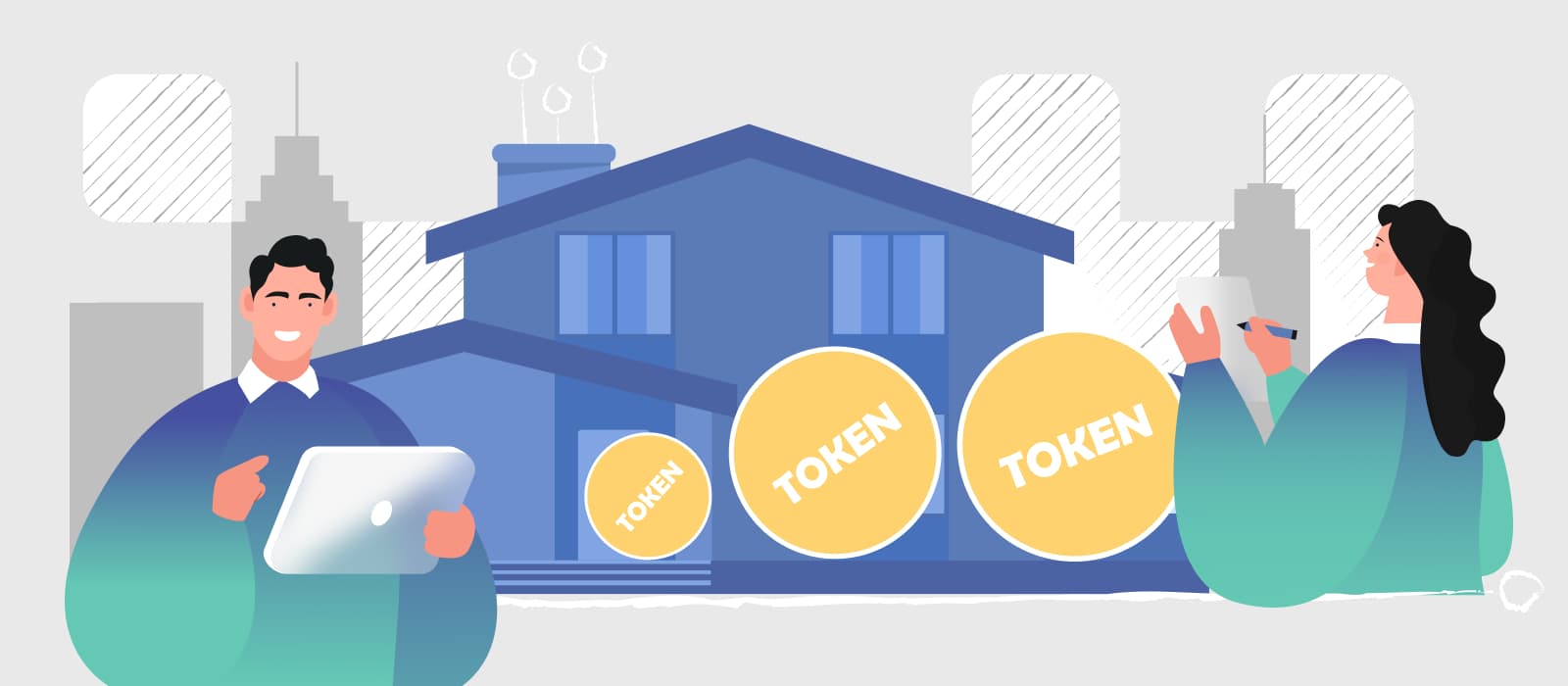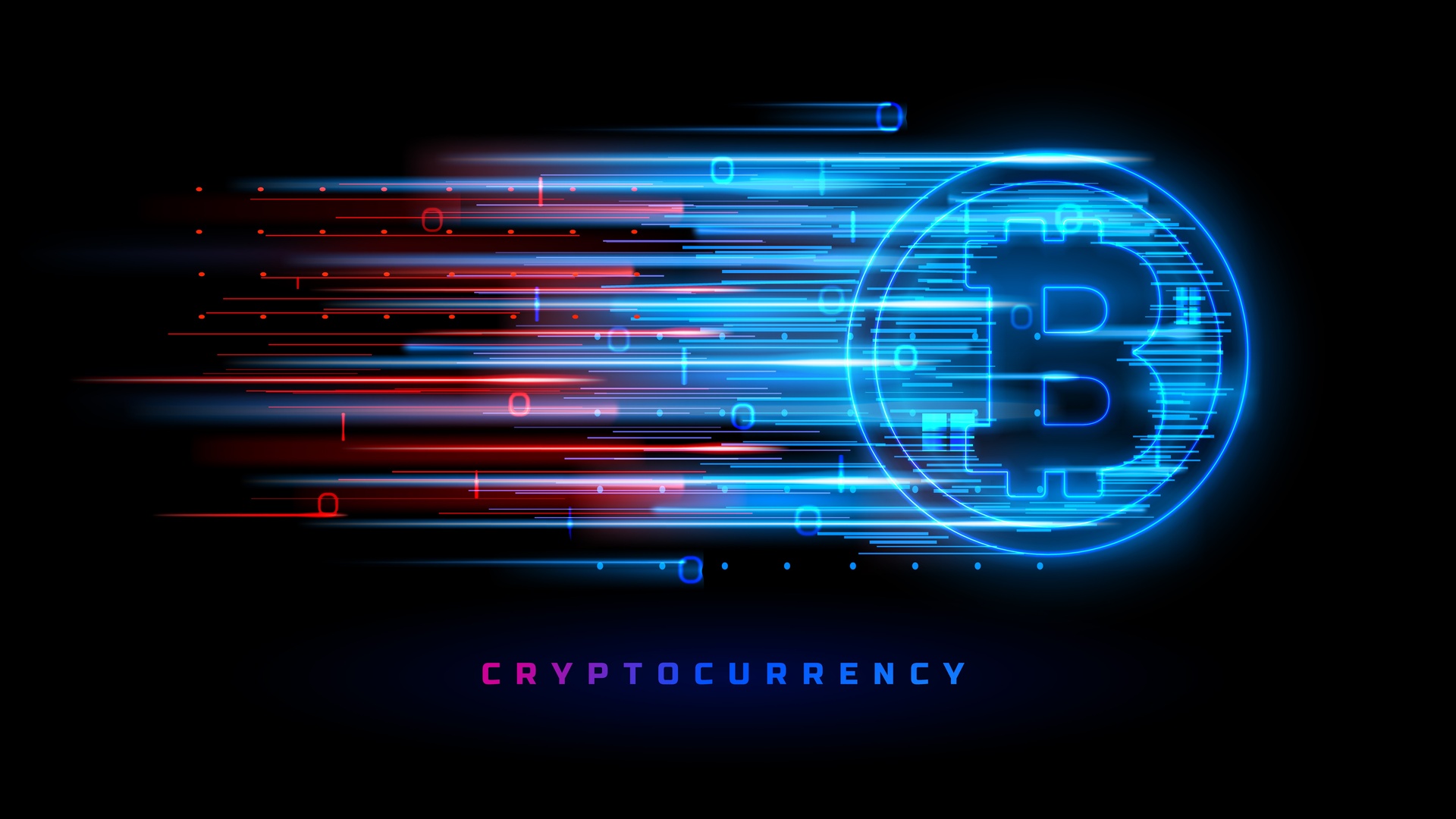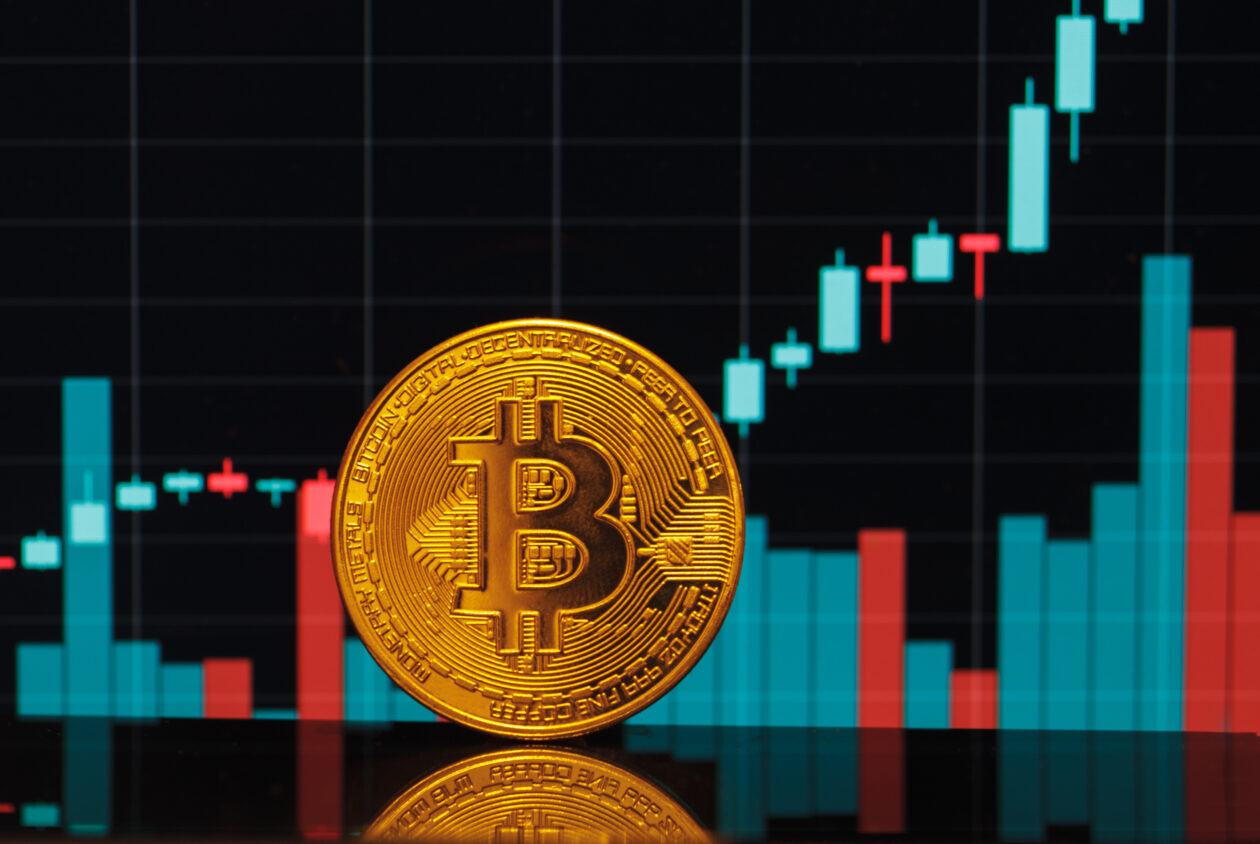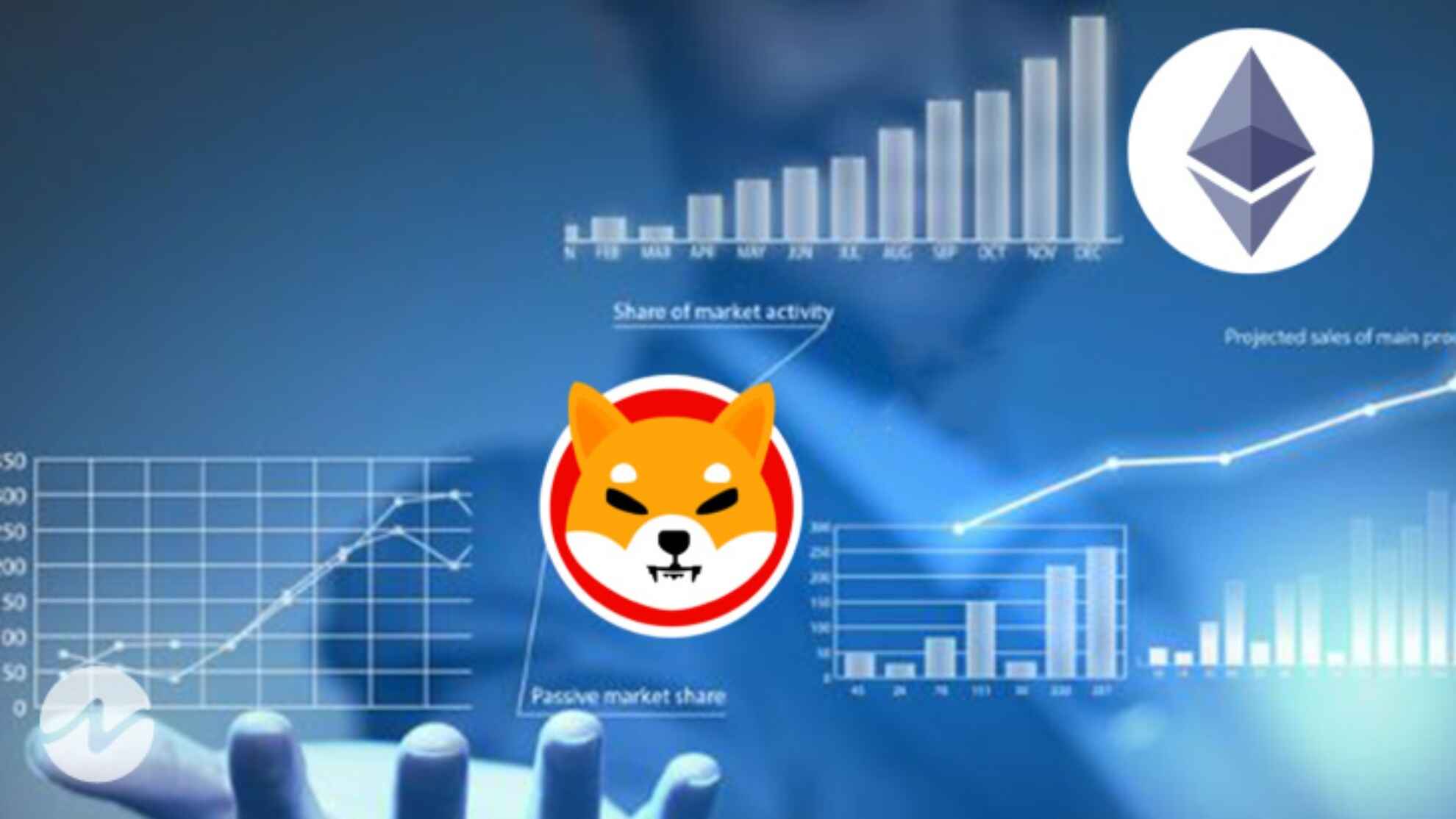Introduction
Welcome to the exciting world of tokenization blockchain! Over the past decade, blockchain technology has revolutionized various industries, and tokenization has emerged as a key concept within this ecosystem. This advanced method of representing real-world assets as digital tokens holds immense potential for transforming traditional finance, real estate, supply chain, and many other sectors.
Tokenization blockchain refers to the process of digitally representing and managing assets using blockchain technology. Instead of physical ownership or paper-based records, assets are converted into digital tokens and stored on a distributed ledger. These tokens, which can be fungible or non-fungible, hold inherent value and are backed by the tangible or intangible assets they represent.
One of the main advantages of tokenization blockchain is its ability to enable fractional ownership. Through the subdivision of assets into smaller, more affordable units, a wider range of investors can participate in investment opportunities that were previously inaccessible. This democratization of asset ownership has the potential to revolutionize financial markets, leveling the playing field for individuals and institutions alike.
Furthermore, tokenization blockchain offers enhanced transparency and liquidity. The use of a distributed ledger ensures that all transactions and ownership transfers are recorded immutably and are easily accessible to all participants. This transparency not only eliminates the need for intermediaries but also reduces the risk of fraud and enhances trust among parties.
The concept of tokenization blockchain has gained significant traction across various industries. From real estate properties and luxury items to art collections and intellectual property rights, there are endless possibilities for tokenizing assets. In addition to traditional assets, tokenization can also be applied to digital assets such as cryptocurrencies, loyalty points, and digital securities.
However, it is important to recognize that tokenization blockchain is not without its challenges. Regulatory frameworks, interoperability between different blockchain platforms, and the need for robust security measures are just a few areas that require careful consideration. As the technology continues to evolve, addressing these challenges will be essential to unlock the full potential of tokenization blockchain.
In the following sections, we will delve deeper into how tokenization blockchain works, explore its benefits and use cases, and discuss the challenges and limitations that need to be overcome. By the end, you will have a comprehensive understanding of this innovative technology and its potential to reshape the way we perceive and manage assets.
What is Tokenization Blockchain?
Tokenization blockchain is a revolutionary concept that combines the power of blockchain technology with asset tokenization. It involves the process of converting real-world assets, whether physical or digital, into digital tokens that are stored and managed on a blockchain network.
Tokenization is the representation of an asset as a token, which can be thought of as a digital certificate of ownership. These tokens are backed by the underlying assets they represent, giving them inherent value. With tokenization blockchain, these tokens are recorded on a decentralized and immutable ledger, ensuring transparency, security, and traceability.
There are two main types of tokens in tokenization blockchain:
- Fungible Tokens: Fungible tokens are interchangeable and identical to each other. They can be subdivided into smaller units and can be traded on various exchanges. Cryptocurrencies like Bitcoin and Ethereum are examples of fungible tokens.
- Non-Fungible Tokens (NFTs): Non-fungible tokens represent unique assets that cannot be exchanged on a like-for-like basis. They are often used to tokenize digital assets such as artwork, collectibles, virtual real estate, and in-game items. Each NFT has a distinct value and can be bought, sold, or traded.
Tokenization blockchain provides several benefits and advantages over traditional asset ownership and management. One of the key advantages is fractional ownership. By tokenizing assets, they can be divided into smaller units, making them more accessible to a wider range of investors. This opens up new investment opportunities and allows individuals to diversify their portfolios without the need for large amounts of capital.
Another benefit of tokenization blockchain is increased liquidity. Traditionally, certain asset classes, such as real estate and illiquid investments, have limited liquidity. With tokenization, these assets can be easily traded on blockchain-based platforms, offering faster and more efficient transactions. This liquidity can attract more investors and create a more dynamic marketplace.
Tokenization blockchain also enhances transparency and reduces the risk of fraud. All transactions and ownership transfers are recorded on the blockchain, creating a transparent and immutable audit trail. This eliminates the need for intermediaries and reduces the potential for fraudulent activities.
Furthermore, tokenization blockchain has the potential to streamline regulatory compliance. By embedding regulatory requirements into the smart contracts governing the tokens, compliance can be automated and enforced. This can reduce the administrative burden and ensure that transactions adhere to the relevant regulations.
In the next section, we will explore how tokenization blockchain works and the underlying technologies that enable this transformative process.
How Tokenization Blockchain Works
Tokenization blockchain involves a series of steps that enable the conversion of real-world assets into digital tokens stored on a blockchain network. Let’s explore the key components and processes involved in how tokenization blockchain works:
1. Asset Identification: The first step in tokenization blockchain is identifying the asset to be tokenized. This could be anything from real estate properties, artwork, intellectual property rights, commodities, or even digital assets like cryptocurrencies.
2. Asset Evaluation: Once the asset is identified, it needs to be evaluated to determine its value. This valuation ensures that the tokens accurately represent the underlying asset’s worth. Independent assessors or qualified experts may be involved in this process.
3. Smart Contract Development: Smart contracts play a crucial role in tokenization blockchain. These self-executing contracts are encoded with pre-determined rules and conditions that govern the ownership, transfer, and other operations related to the tokens. The smart contract can also include regulatory compliance requirements, dividend distribution processes, and more.
4. Token Creation: After the smart contract is developed, the tokens representing the asset are created. These tokens can be fungible or non-fungible, depending on the type of asset being tokenized. The tokens are typically issued and registered on a blockchain network, which could be a public blockchain like Ethereum or a private blockchain solution.
5. Asset Custody: The custody of the underlying asset is a critical aspect of tokenization blockchain. Depending on the asset, it may be held by a trusted custodian, who ensures the security and safekeeping of the asset. The custody arrangements should align with the legal and regulatory requirements specific to the asset being tokenized.
6. Token Offering: Once the tokens are created and the asset custody is established, the tokens can be offered to investors or participants. This can be done through an initial token offering (ITO) or a security token offering (STO), depending on the regulatory environment and requirements.
7. Secondary Market Trading: After the tokens are offered and sold, they can be traded on secondary markets. These markets can be traditional stock exchanges or specialized blockchain-based trading platforms. The tokens’ liquidity enables investors to buy, sell, or trade their holdings, creating a more dynamic marketplace.
8. Governance and Compliance: Tokenization blockchain requires governance and compliance processes to ensure that all transactions and operations adhere to regulatory requirements. The smart contract can include regulatory compliance features, and organizations may need to implement Know Your Customer (KYC) and Anti-Money Laundering (AML) procedures.
In summary, tokenization blockchain works by identifying an asset, evaluating its value, developing smart contracts, creating the tokens, establishing custody, offering the tokens, facilitating secondary market trading, and implementing governance and compliance measures. This process brings numerous advantages in terms of fractional ownership, increased liquidity, transparency, and streamlined regulatory compliance.
Benefits of Tokenization Blockchain
Tokenization blockchain offers a wide range of benefits and advantages that make it a compelling and transformative technology. Let’s explore some of the key benefits:
1. Fractional Ownership: One of the most significant advantages of tokenization blockchain is fractional ownership. By dividing assets into smaller tokens, tokenization enables a broader range of investors to participate in ownership. This democratizes access to investment opportunities that were previously restricted to wealthy individuals or institutions. Fractional ownership also allows for greater diversification and liquidity for investors.
2. Increased Liquidity: Tokenization blockchain improves the liquidity of traditionally illiquid assets. By enabling easy buying, selling, and trading of tokens on blockchain-based platforms, investors can access liquidity without relying on traditional market infrastructure. This increased liquidity can attract more participants and improve price discovery mechanisms in various asset classes, including real estate, art, and private equity.
3. Transparency and Traceability: Transparency and traceability are inherent features of tokenization blockchain. All transactions and ownership transfers are recorded on the immutable blockchain ledger, providing a transparent audit trail. This removes the need for intermediaries and minimizes the risk of fraud or tampering. Participants can easily verify the authenticity and history of tokenized assets, ensuring greater trust and transparency.
4. Enhanced Accessibility: Tokenization blockchain makes investing in assets more accessible. By reducing the investment barriers, such as high minimum investment amounts or restricted access, tokenization allows a broader audience to participate. This includes retail investors, international investors, and those who previously lacked the means to invest in certain asset classes. Increased accessibility can contribute to financial inclusion and democratization of investment opportunities.
5. Streamlined Processes: Tokenization blockchain simplifies complex processes such as asset management, transfer of ownership, and compliance. By automating these processes through smart contracts, administrative tasks are reduced, and efficiency is improved. Compliance requirements can be embedded into the smart contracts, facilitating regulatory adherence and reducing manual errors and delays.
6. Cost Efficiency: Traditional asset ownership and management often involve significant costs associated with intermediaries, paperwork, and the lack of automation. Tokenization blockchain reduces these costs by eliminating intermediaries and streamlining processes. It also eliminates the need for physical storage and maintenance of assets, further reducing operational expenses.
7. New Investment Opportunities: Tokenization blockchain opens up new investment opportunities by expanding the range of assets that can be tokenized. This includes assets that were previously difficult to invest in, such as high-value real estate properties, fine art, or exclusive private equity deals. Tokenization creates a more inclusive and diversified investment landscape.
8. Global Market Access: With tokenization blockchain, geographical barriers are minimized, allowing investors from across the globe to participate in investment opportunities. It allows for 24/7 trading without the limitations of traditional market hours or time zones. Investors can access and trade tokens at any time, creating a global market open to participants worldwide.
Tokenization blockchain offers a multitude of benefits, revolutionizing the way assets are owned, managed, and traded. It provides increased flexibility, accessibility, transparency, and efficiency, making it an attractive option for both investors and asset owners.
Use Cases of Tokenization Blockchain
Tokenization blockchain has the potential to disrupt and revolutionize a wide range of industries by transforming the way assets are owned, managed, and transacted. Let’s explore some compelling use cases of tokenization blockchain:
1. Real Estate: Tokenization blockchain can revolutionize the real estate industry by allowing fractional ownership of properties. Investors can purchase tokens representing a portion of a property, enabling them to diversify their real estate investment portfolio and access high-value properties that were previously out of reach. Tokenization also offers increased liquidity, as properties can be traded on blockchain-based platforms.
2. Art and Collectibles: Tokenizing art pieces and collectibles opens up new investment opportunities and improves market accessibility. By tokenizing artworks and collectibles, investors can own fractionalized shares of valuable pieces and participate in the appreciation of the assets. It also allows for fractional ownership of high-value collectibles, such as rare stamps, antique cars, or rare coins, democratizing access to these markets.
3. Venture Capital and Startups: Tokenization blockchain offers a new way for startups to raise capital through Security Token Offerings (STOs). By tokenizing their equity or assets, startups can easily offer fractional ownership to a broader investor base while adhering to regulatory requirements. This opens up investment opportunities for retail investors who can participate in the early stages of promising ventures.
4. Supply Chain Management: Tokenization blockchain can improve supply chain management by enhancing transparency, traceability, and accountability. It allows for the tokenization of physical goods, enabling easy tracking of products throughout the supply chain. This increases efficiency, reduces fraud and counterfeiting, and ensures the authenticity and origin of products.
5. Intellectual Property: Tokenization blockchain can revolutionize the management and monetization of intellectual property rights. Artists, musicians, writers, and other creators can tokenize their intellectual property, such as books, music, or patents, and receive royalties directly from the token sales and subsequent transactions. This provides creators with greater control over their assets and fair compensation for their work.
6. Commodities: Tokenization blockchain can facilitate the trading of commodities by representing them as digital tokens. This allows easier fractional ownership and trading of commodities like precious metals, oil, or agricultural products. It also enables investors to gain exposure to these assets without the need for physical storage or complex logistics.
7. Asset-backed Securities: Tokenization blockchain can streamline the issuance and trading of asset-backed securities. By representing traditional financial instruments, such as stocks, bonds, or real estate investment trusts, as tokens, the process of buying, selling, and transferring ownership becomes more efficient and cost-effective. It increases liquidity and accessibility for these financial instruments.
8. Gaming and Digital Assets: Tokenization blockchain is gaining popularity in the gaming industry by allowing players to own and trade in-game items and virtual real estate. Non-Fungible Tokens (NFTs) enable players to have secure and verifiable ownership of their digital assets, creating a vibrant secondary market for virtual goods.
These use cases highlight the versatility and transformative potential of tokenization blockchain across various industries. As the technology continues to evolve and gain wider adoption, more innovative use cases are likely to emerge, unlocking new possibilities for asset ownership and management.
Challenges and Limitations of Tokenization Blockchain
While tokenization blockchain holds immense transformative potential, there are several challenges and limitations that need to be addressed for its widespread adoption. Let’s explore some of the key challenges:
1. Regulatory Frameworks: The regulatory landscape surrounding tokenization blockchain is still evolving and can vary significantly across jurisdictions. The lack of clarity and consistency in regulations poses challenges for businesses and investors. Different types of assets being tokenized may fall under different regulatory frameworks, requiring careful consideration and compliance.
2. Interoperability: Interoperability between different blockchain platforms is crucial for seamless asset transfer and trading. However, achieving interoperability among various blockchain protocols and standards can be complex and challenging. Establishing interoperability standards and protocols is necessary to ensure liquidity and efficiency in tokenized asset markets.
3. Scalability: Scalability is a crucial consideration for tokenization blockchain, especially as the adoption and volume of tokenized assets grow. Blockchain networks need to handle a large number of transactions efficiently to ensure smooth operations. High transaction fees and slower transaction speeds can be barriers to widespread adoption.
4. Security and Cybersecurity: Security is paramount in tokenization blockchain, as digital assets and transactions are susceptible to hacking and cyber attacks. Robust security measures, including encryption, secure custody solutions, and comprehensive cybersecurity protocols, are necessary to protect the tokenized assets and the underlying blockchain infrastructure.
5. Investor Education: Tokenization blockchain is a relatively new concept, and there is a need for investor education and awareness. Investors need to understand the risks, benefits, and mechanics of tokenization blockchain to make informed investment decisions. Education and awareness initiatives can help bridge this knowledge gap.
6. Limited Asset Class Coverage: While tokenization has the potential to disrupt various industries, there are challenges in tokenizing certain asset classes. Assets that have complex legal and regulatory frameworks, such as derivatives or highly regulated financial instruments, may face obstacles in the tokenization process. Overcoming these challenges requires collaboration between industry stakeholders, regulators, and legal experts.
7. Adoption Barriers: Adoption of tokenization blockchain faces barriers such as resistance from traditional market participants, established infrastructures, and legacy systems. Overcoming these barriers requires demonstrating the benefits, addressing concerns, and building trust and confidence among all stakeholders.
8. Market Volatility and Liquidity: While tokenization blockchain improves liquidity for certain asset classes, it can also be affected by market volatility. Tokenized assets may experience price fluctuations, resulting in potential risks for investors. Ensuring liquidity and stability in these markets requires mechanisms to manage volatility and maintain adequate trading volumes.
Addressing these challenges and limitations will be crucial for the widespread adoption and success of tokenization blockchain. Collaborative efforts from industry participants, regulators, and technology providers are necessary to create a favorable environment for tokenized asset markets to thrive.
Conclusion
Tokenization blockchain has emerged as a groundbreaking technology that has the potential to reshape various industries by transforming how assets are owned, managed, and traded. By representing real-world assets as digital tokens on a blockchain network, tokenization blockchain offers fractional ownership, increased liquidity, transparency, and streamlined processes.
The benefits of tokenization blockchain are vast. Fractional ownership allows a wider range of investors to participate in asset ownership, democratizing access to previously exclusive markets. Increased liquidity improves market efficiency and accessibility. Tokenization also enhances transparency, traceability, and accountability, reducing fraud and improving trust between stakeholders. Additionally, tokenization blockchain streamlines processes, reduces costs, and opens up new investment opportunities.
However, tokenization blockchain also faces challenges and limitations, including regulatory frameworks, interoperability, scalability, security, investor education, limited asset class coverage, adoption barriers, and market volatility. These obstacles must be addressed through collaborative efforts to create a favorable environment for the widespread adoption and success of tokenized asset markets.
As tokenization blockchain continues to evolve, it is likely to find application in more industries and asset classes, unlocking new possibilities for ownership, investment, and financial inclusion. Transparency, efficiency, and accessibility will continue to drive the growth of tokenized asset markets, revolutionizing traditional finance, real estate, supply chain, and more.
With ongoing technological advancements and regulatory developments, tokenization blockchain is poised to fundamentally transform the way we perceive, trade, and manage assets. It is an exciting journey that promises to reshape industries, empower individuals, and unlock new opportunities in the global economy.







